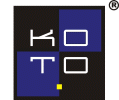Main menu
You are here
Technical description including the state of development
Problem
There are several thousand biogas plants throughout Europe and the number is still rising. Different technologies and different substrates are used but all of them have some common challenges. Beside optimization of biogas and power production, they are always in search of affordable highly energetic substrates (feedstock), effective use of the heat produced, and disposal or even monetization of the resulting digestate. Digestate is usually declared as a biological fertilizer, but some sources report that its use as fertilizer is sometimes posing some soil fertility problems if used inappropriately. Digestate logistics is costly and excessive application of untreated digestate to the fields can significantly alter the chemical/physical structure of the soil. Its specific intense smell also negatively influences the quality of life of nearby population.
Many biogas plants have introduced separation of liquid and solid phases of the digestate. The solid phase is more suitable for fertilisation use for both logistic and agro-technical reasons. Liquid phase is frequently directed to municipal WW treatment plants. Classical (biological / bacterial) WW treatment successfully reduces the quantities of organic substances and nutrients, at the cost of significant CO2 emissions and significant energy consumption for aeration. Mineral nutrients that are flushed with the liquid phase of digestate are lost in the bacterial sludge which is usually deposited or even burned since it comes from the waste water treatment plant and is considered as waste. There are technologies to extract volatile ammonia, but they are not commonly used. Phosphates are simply not recovered and present a significant loss in the global phosphorus cycle.
Solution
Algae hold great potential for energy use for their growth rate, easy production, better utilization of sunlight compared to conventional plants, shorter lifecycles and independence from fertile agricultural land. Biogas plants are rich sources of mineral nutrients, CO2 and heat. By algal and algae-bacterial recycling of these, we can close material cycles, provide feedstock for bio-refining various high value products and decrease competition between biogas and food use of agricultural crops.
Algal production can fully use nutrients from anaerobic digestate, CO2 that is otherwise emitted to the atmosphere and some of the excess heat from the biogas operation.
There are several goals that can be reached by using algae:
Expected outcomes
- Establishment of demonstration centre, an installation of the technology at one of the project partners where we are able to demonstrate the technology in different working regimes, measure the operating characteristics of the system, measure environment impacts, provide the LCI data in a realistic set-up, and above all show the installation to the potential customers to enable repeated installations.
- Prepare a project manual, a set of documents in technical and marketing sense which represent a plan for any repeated installation of the project at potential customer’s site. This project manual will include all collected data needed to convince a potential customer to accept the new innovative technology, procedures needed in project planning, lab and pilot scale analysis needed before a project can be repeated, requirements that need to be met by a potential customer (legal, organizational, technical, economic) before such a project can be repeated. Project manual will essentially define the skeleton of all future projects, where we need to understand specific requirements of the customer, constraints of the installation, perform some lab and pilot testing, based on that feasibility and LCA studies have to be made, followed by planning, construction, acceptance, and operation phases. Such installations will have to be monitored and maintained. In the project implementation we plan to use prefabricated components, reusable system components (like sensors, actuators and control system itself), but final integration work remains to be specific for each particular project.
- Market development activities that consist of preparation of the marketing tools needed to further penetrate the market with this innovative technology and accompanied by presentations and events that serve the purpose of disseminating the environmental and economic benefits of the innovative technology to a wider European biogas market. These activities will also include recruitment of the partners that will be able to locally support such projects (both sales and implementation).




